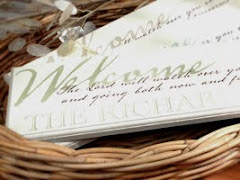Monday, September 12, 2011
Memories of Lawn Care...
My Uncle Michael loved to work in the yard. In fact, he was a self-described fanatic!
He was the first person I knew who had his own fertilizer cart and had a flawless bluegrass lawn. I was four years old when I first saw him work with his cart and I remember asking him what he was doing. He stopped and explained why it was important to "feed the lawn" on a regular basis to keep it healthy.
When my cousin was assigned the chore of mowing the lawn, my uncle insisted he mow one direction and then the other so there were diamond shapes in the grass. My cousin inherited his father's love for the lawn...as an adult, he spends hours fertilizing it, killing weeds, and making it beautiful and healthy.
My Dad liked to pick on his younger brother Michael. He knew how important that lawn was to him, but he still liked riding our horse (her name was Lucky) across Michael's front lawn. You can imagine how exasperated Michael became when he saw Lucky's hoof prints in his beautiful green turf!
If a healthy lawn and garden is important to you, you know how necessary regular maintenance is. September is the best time for planting grass seed -- early enough in the season for seeds to germinate and grass to grow before those cold winter temperatures settle in. At The Green Thumbers, we have a variety of grass seed types to fit your lawn's individual needs.
It is also the time for strengthening you lawn for the winter. Scotts Lawn Pro Super Turf Builder with Wintergard is an excellent fertilizer which will help your lawn to be ready for the winter months ahead (if You are fertilizing your lawn on the Scotts 4 Step program, this product is Step 4).
Growing a healthy lawn takes patience and skill, but with a little effort and care, you can have a beautiful, healthy lawn all year round. Hopefully, no one will make hoof-prints in your front lawn.
Monday, August 22, 2011
Mommy, What Kind of Flower is That?

That's a Dandelion," she told me.
"Oh!" I gasped, in awe. I was easily impressed at that age. "I thought Dandelions were yellow. This is all white and fuzzy."
"That's because it has gone to seed. if you blow on it, the little white seeds will blow away."
I had done this before and it was one of my favorite things to do, but I hadn't realized that the white feathery things were Dandelions or seeds. I blew on the head of the flower and watched as the white seeds danced away on the breeze.
"In a little while," Mom explained, "those seeds will land somewhere else and grow into brand new Dandelions."
After a few minutes I asked her, "Mommy, why do you pull Dandelions out of your garden if they're flowers?"
"Because they're weeds," she replied.
"But how can a flower be a weed?"
Mom smiled. "Anything that grows somewhere you don't want it to is a weed. Technically a rose can be a weed if it grows in the wrong place."
"Does anybody have a Dandelion garden?"
"I don't think so," she said.
I didn't think this was fair. I decided that one day I would grow up and have my very own Dandelion garden...
Many parents miss the opportunity to spend time with their children in nature, teaching them about things as simple as weeds in the back yard. What a lot of people don't realize is that this stuff, while simple and frivolous to many adults, can be exciting and fun for kids. Family fun, lasting memories can be made without money, great effort, or skill. All it takes is time, patience, and the willingness to listen and answer questions like, "Mommy, what kind of flower is that?"
Monday, August 8, 2011
Save the Tomatoes Now: Stop Blossom End Rot!
On Tomato and eggplant blossom-end rot usually begins as a small water-soaked area at the blossom end of the fruit. This may appear while the fruit is green or during ripening. As the lesion develops, it enlarges, becomes sunken, and turns black and leathery. on peppers, the affected area appears tan, and is sometimes mistaken for sun scald, which is white. Ultimately mold grows in the lesion and the fruit is lost.
Blossom-end rot is associated with a low concentration of calcium in the fruit. The problem is induced when demand for calcium exceeds supply. This may result from low calcium levels, drought stress, or excessive soil moisture fluctuations which reduce uptake and movement of calcium into the plant, or rapid, vegetative growth due to excessive nitrogen fertilization.
To improve the calcium content of the soil, try Shake 'N Feed by Miracle Grow. To stop and prevent Blossom End Rot over the next several weeks, spray your tomatoes, peppers and more with Yield Booster by Fertilome.
Tuesday, August 2, 2011
Fairy Gardening 101

Some of you may be wondering, "What IS a Fairy Garden." A Fairy Garden is a tiny garden meant for imaginary fairies (or simply invisible or shy ones if you're a believer). These gardens are small -- small enough to fit in a gardening box and fit on a coffee table. You can put them outside in warm weather, but for people who live in an apartment or who have no yard and outdoor gardening space, these tiny planters are ideal. Fairy-Gardeners plant tiny plants and arrange furniture and landscaping items (paths, wheelbarrows, etc.) in the garden to make their "Fairy-Guests" as comfortable as possible. (for more information on Fairy Garden products, please visit http://www.fairygardening.com/).
Sometimes, however, garden centers might be out of the accessories and plants which are originally made for the Fairy Gardens, or a customer might not like the little elements available to decorate the planters. In either case, Fairy Gardeners can still be happy, creative, and enjoy working with their tiny planters...Here are a few suggestions:
(1) Plants: Plants for your Fairy Garden only have to meet a few simple critera:
(a) They must be small (they have to fit into the tiny plant box)
(b) They must grow slowly (we can't have them outgrowing their planter, can we?)
(c) They must be cute (sorry, uglier plants like skunk cabbage need not apply for residency in a Fairy Garden)...
Here are some suggestions for Fairy Garden Plants:
Ferns
Ivy
Coffee Plants
Podocarpus
Palm (Mini-ones of course)
Cactus Garden
Hens and Chickens (Note: Cacti and Hens and Chickens need a LOT of direct sunlight to stay healthy)...
Once you've planted your fairy garden, you have to think about accessorizing it. Sometimes more creative people can feel limited by decorative items offered in stores, so here are some ideas for thinking outside the box:
- Toy stores (You could find everything from well-made miniature doll furnature for your garden to little trains and tracks ... maybe your fairies like to travel...)
- Craft Stores (You might find some unfinished mini-accessories here that you could decorate in your own way...if your favorite store has a doll-house section, be sure to check out the miniatures they have on sale there)
- Other departments of your garden center (if you want to make a rocky path for your fairies, most garden centers have pebbles and other small rocks for sale -- also be sure to look for things like wood chips and sand.)

Tuesday, June 14, 2011
Rainy Weather Risk!!!
Leaves may curl, shrivel or have spots ranging from tan to black. The infected leaves will often drop at times the entire plant may shed its leaves. When the weather dries, new leaf growth will likely appear. Rake fallen infected leaves up quickly and discard.
Fungicidal sprays can be used to manage anthracnose once it is present and in the future be sprayed to prevent anthracnose during especially wet springs. A natural method would be to use Liquid Copper Soap from Natural Guard. For continued disease resistance a systemic fungicide or broad spectrum fungicide would be a good option.










